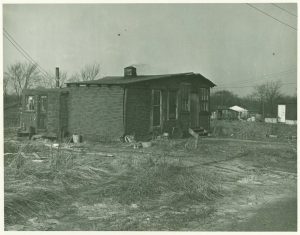
African Americans built a tiny enclave on the outskirts of toney Chagrin Falls: Black History Month

www.teachingcleveland.org

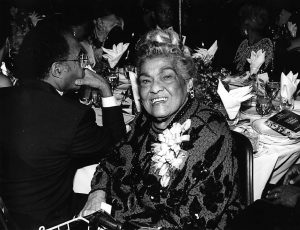

by Jacob T Mach, 2020, Master of Arts (MA), Bowling Green State University, History.
Ohio politics during the Reconstruction era has received sparse treatment by historians. Not until 1970 with Felice Bonadio’s North of Reconstruction was there a monograph solely dedicated to Ohio politics during the era. Robert Sawrey wrote his Dubious Victory in 1992, but still the historiography on Reconstruction Ohio remains dramatically underdeveloped. In Ohio, the question of African American suffrage was the single most divisive issue facing politicians during the era. Radical Republicans brought a referendum before the people of Ohio in 1867 to change the state constitution to protect the suffrage rights of both white and black males above the age of 21. The measure failed 216,987 votes (45.9 percent) to 255,340 (54.1 percent) votes. The failure of the suffrage amendment disheartened many Radical Republicans across Ohio and the rest of the North, yet Ohio Republicans managed to elicit more support for suffrage than most states in the North. Such support did not arise randomly; it intentionally developed over a three-year period beginning after the Civil War. Two primary research questions drive this project: 1) Did suffrage become a crucial issue in the state of Ohio earlier than the existing historiography suggests, 2) why were Ohio radicals able to generate more support for black suffrage within the Republican party than in other states in the North? By showing that Republican support (through Congressional voting records, public support via speeches and letters, and by Republican-sympathetic papers throughout the state) for black suffrage existed in significant numbers in 1865 (prior to 1866-1867, as Bonadio, Sawrey and others suggest) in both the Western Reserve and in other parts of the state and only continued to grow until the referendum in the fall of 1867, this project will argue that black suffrage was not only being pursued by radicals, but ultimately by the vast majority of the Republican party. Ohio’s inability to secure black suffrage with overwhelming Republican support will in turn help to explain why other northern states achieved even less success in their pursuit of black suffrage.

by Andrew L Whitehair, 2020, Master of Arts in History, Cleveland State University, College of Liberal Arts and Social Sciences.
Prior to Tom L. Johnson’s election to mayor of Cleveland in 1901, the city’s tax system was rife with inequality. Johnson sought to correct these inequalities by democratizing Cleveland’s tax system. To accomplish this aim, he established a new department in City Hall, called the “tax school,” which was designed to educate Clevelanders about the existing tax system’s failures as well as Johnson’s proposed solutions. The tax school worked to improve the tax assessment process by implementing a scientific approach, improving transparency, and soliciting citizen input. Johnson’s efforts, however, met with resistance from an entrenched business elite that employed the state legislature and courts to destroy Johnson’s tax school. Through political campaigns of misinformation, usurpation of the primary process, and stuffing key tax institutions with friendly partisans, these business elites conspired to control the tax machinery of Cuyahoga County. This study of Johnson’s efforts to democratically reform Cleveland’s tax system reveals how the city’s business elite colluded to destroy the tax school and to retain the levers of tax power. In providing the canonical account of Cleveland’s tax school, I situate the history of the tax school within a multi-party negotiation governed by unequal power relationships between business elites and the rest of society. The wealthiest Clevelanders possessed the greatest access to the tax system, and they used that access to rig the system in their favor.
 In a State of Access: Ohio Higher Education, 1945 – 1990
In a State of Access: Ohio Higher Education, 1945 – 1990
by Jonathan Tyler Baker, 2020, Doctor of Education, Miami University, Educational Leadership.
The link is here
In a State of Access is a historical study about the way public higher education in Ohio became both generally accessible to nearly every citizen while also offering elite undergraduate and graduate programs. This project grapples with the question of how national, state and regional factors – from the mid-1940s through the end of the 20th century – influenced the way Ohio’s leaders viewed the purpose of public higher education and influenced whether Ohio’s leaders chose to focus on making public higher education more selective or accessible. State leaders initially balked at the idea of funding public higher education. When they did decide to make the investment, ideological battles, economic stagnation and the state’s budget deficit continually influenced how state leaders viewed the purpose of public higher education. As a result, state leaders never succeeded in building a system of public higher education that reflected a clearly defined, well-organized purpose. This dissertation is the first full-length study about contemporary public higher education in Ohio and one of the few case studies of any state’s system of higher education. As the public and politicians at the state and national level pay more attention to the accessibility of higher education, and the role of a college degree in a globalized, service economy, a case study of Ohio helps us to better understand why public higher education is still struggling with problems over access.
 The Shame of the Buckeye State: Journalistic Complacency on Episodic Lynching in Ohio from 1872 to 1932
The Shame of the Buckeye State: Journalistic Complacency on Episodic Lynching in Ohio from 1872 to 1932
by Rounkles M Claire, 2020, Master of Science (MS), Ohio University,
Journalism (Communication)
The link is here
The lynching era in Ohio lasted from 1803 to 1937. During these years thirty-five people died at the hands of a lynch mob and seventy-nine escaped from a mob’s clutches. This thesis situates the history of lynching in Ohio from 1872 to 1932 and discusses the issue of complacent journalism in the Ohio press through a study of twenty-four cases of white-on-white lynching and racial terror lynching. This thesis shows that lynching was employed as a means to enact fear to keep Black Ohioans in a marginalized position and prevent them from prospering economically or politically. The author also argues that journalists were not objective bystanders but were key to the social voice and national conversation that accepted the practice of lynching in America. By utilizing the concept of critical race theory, the author shows that the racist ideal of Whiteness was able to become hidden by seemingly objective reporting, thus allowing the mainstream press to accept the practice of lynching without the guilt of unlawful “justice.” There is also a paucity of research on Harry C. Smith, a Black journalist who pushed for the first anti-lynching law in Ohio. As such, this research aims to make a significant impact not only on the literature involving northern lynchings but also in the history of Ohio and the need to understand its dark past. In 2020 this historical research hold saliency regarding the racial violence which continues today in America.

The Ku Klux Klan in Northeast Ohio: The Crusade of White Supremacy in the 1920s by Steve Anthony Viglio, 2021, Master of Arts in History, Youngstown State University, Department of Humanities.
The link is here
The impact of the Ku Klux Klan in the twentieth century has been documented by many historians and scholars, from a national perspective. Local case studies are not quite as common. This thesis looks at two of the most important and popular chapters of the Ohio Ku Klux Klan, Akron and Youngstown. For Akron, I relied on thorough research of the Akron Beacon Journal newspaper archive. For Youngstown, I began research previously conducted by former Youngstown State University faculty Dr. William Jenkins’ Steel Valley Klan and branched from there. I used The Vindicator newspaper as a reliable source for Youngstown Klan history. Specifically, the Akron chapter of the KKK previously has not been researched besides a Master’s thesis several decades ago. Newspaper coverage was abundant in Akron and provided a clear, unbiased blueprint in order to perform the case study. Results of the case studies in Akron and Youngstown show mixed results in terms of the Klan’s effectiveness. In Akron, the Klan was able to infiltrate the Akron public school system for a period. Their ultimate goal of barring Catholic teachers, however, was not achieved. Their popularity peaked by 1925 which was a bit longer than the Youngstown Klan. In Youngstown, they showed moderate success in enforcing bootlegging laws but the 1924 Niles riots signaled the peak for the Klan. Ultimately, from a national viewpoint, the fates of both chapters were very similar. By the end of the 1920s, national Klan popularity had diminished in a similar fashion in Akron and Youngstown respectively.
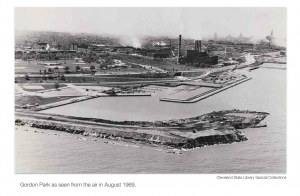 Rockefeller Park: The crown jewel of University Circle; the vision of 19th Century benefactors
Rockefeller Park: The crown jewel of University Circle; the vision of 19th Century benefactors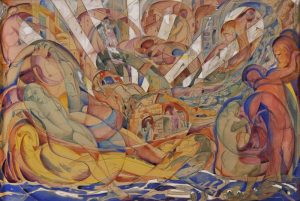
WRHS: August Biehle, “Study for Great Lakes Exposition Mural,” 1936, watercolor on paper, 20 x30 inches, signed lower right
“Honoring Our Past Masters: The Golden Age of Cleveland Art, 1900–1945’’ WRHS Review by Steven Litt
A new exhibition in the Western Reserve Historical Society’s Cleveland History Center in University Circle, entitled “Honoring Our Past Masters: The Golden Age of Cleveland Art, 1900–1945,’’ argues for greater awareness of and admiration for hometown artists.
December 12, 2021
Read more
Plain Dealer November 11, 2021:
11 years, 2 executives: Is Cuyahoga County’s charter meeting expectations?
By Courtney Astolfi, cleveland.com and Kaitlin Durbin
The link is here
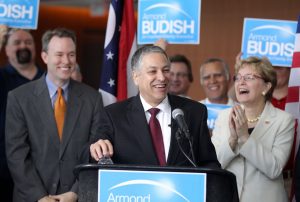
Cuyahoga County Executive Armond Budish on the day he announced his candidacy at the new Ernst & Young Tower in Cleveland on Thursday, May 30, 2013. Budish would go on to succeed Ed FitzGerald, in background on left. On right in background is Rep. Marcy Kaptur. (Lisa DeJong/The Plain Dealer)The Plain Dealer